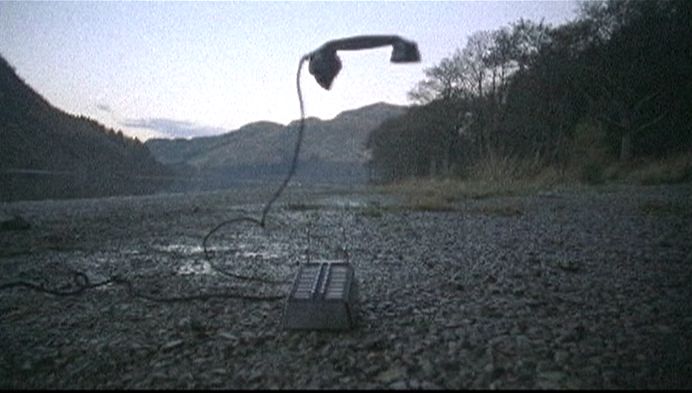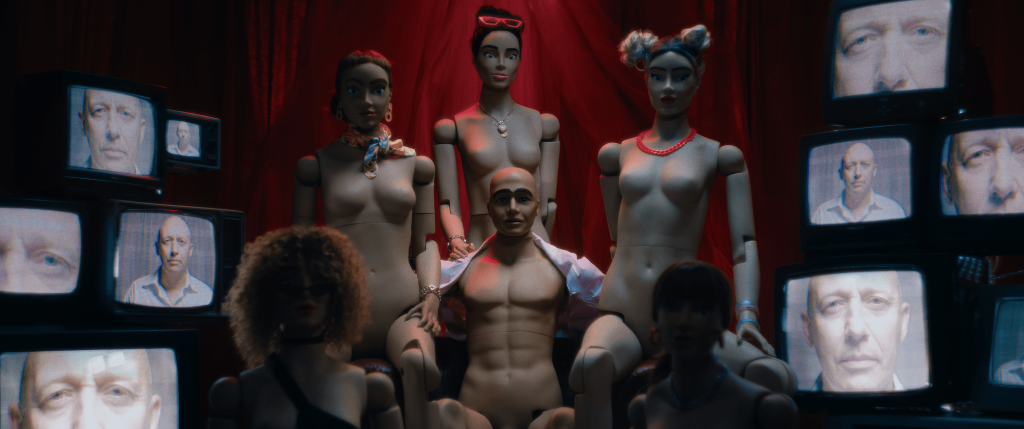I will consider pixilation as a form of dance in which the movements that are produced are wholly specific to animation, thereby making the study of this method fruitful for Animation Studies. In pixilation, single film frames are synchronised with the incremental breakdown of physical movement to produce machine-like and superhuman actions that rival and exceed the most athletic of movements. These strange, dance-like sequences are conceived of and exist solely in relation to the distinctive method of single frame technology. Actors move in ways that we know to be physically impossible, such that the technological means that render such actions are made especially transparent.
There are a few variations on this method, and I will discuss some of them in this essay. The term pixilation originally was coined by Norman McLaren, who, noting its potential for mime and ballet, claimed it as a category of animation. He emphasised the importance of ‘controlled live action’ in order to achieve the illusion of smooth movements in the process of making pixilation films (Dan Burns, 1968:9).
Paul Wells observes that animation can dynamically assume any form, especially important in the representation of the human body in motion. Animated film and dance both share movement as the central principle, and McLaren recognised these affinities (Wells: 111). Wells draws on Rudolph Laban’s modern dance theory as a framework for analysing types of movement in animation (Wells, 1998: 112). Of these eight basic effort actions, the manoeuvres of glide and float apply to particular effect in pixilation.
These actions are manifested in most of the examples discussed here and are realised most remarkably in McLarens Neighbours (1957). An allegory of the escalation of conflict between nations, the film shows a thing of beauty, a flower, to cause violence between next door neighbours The characters are depicted as literally hopping mad, seemingly hovering above the ground, pixilation techniques rendering an otherwise impossible elevation of the body into the air. The film exemplifies the ways in which pixilation is a means to communicate heightened emotions and sensations. The energetic performances possess an elegance and rhythm due to McLaren’s attention to controlled direction and strict choreography.
Continuing with the capacities of pixilation to communicate extreme emotional states, Daria Kashcheeva’s Electra (2023) is another example of how pixilation is used to symbolise the loss of self-control. It gives the human protagonist, Electra, a robotic appearance as she is thrust into a number of different positions and situations without seemingly moving her limbs. This perilous environment is inhabited by life like objects, including a group of highly animated mannequins. Inanimate objects seem livelier than their detached human counterparts in an enactment of the uncanny forces that drive this myth.
This sense of altered and magical reality is further exemplified in works such as Take Me Home (1997) by Matt Hulse. In this film, the human body is pixilated across a number of locations, moving in ways that complement the characteristics of each space, for example, spinning like a top on the summit of a hill.
Alternatively, Anne Charlotte Robinson’s Pixillation (1976) does not so much pixilate the body to perform impossible physical feats, but rather seems to articulate a heightened sense of mental struggles. Synchronising her actions with the single frame, the artist repeatedly repositions herself in front of the camera, turning 90 degrees between takes, such that her profile, face and back of her head are seen in rapid succession. Though the technique gives the impression that the figure is spinning very fast, the action remains physically possible unlike the creation of a new kind of human movement that McLaren achieved with his flying actors. The dizzying effect created through the frantic imagery is consistent with the themes of mania and anxiety that the artist examines throughout her oeuvre.
Discovering this early piece by Robinson was valuable for my own practice, in which I similarly employed rotating actions (Spinning, 2023). It has led to the current practice where I use pixilation to represent not a gymnastic body, but rather the one that succumbs to gravity. Such application of pixilation gives an impression of heaviness in movement, of the figure performing truncated motions rather than cycles of action.
In addition to the representation of anger, disassociation, malfunction and heightened subjectivity, pixilation is also deployed for comic effect and to evoke a sense of excitement and exhilaration. This is evident in Marie Menken’s Go, Go, Go (1964), a film that, ‘imparts hilarity, joyousness expansion of life with an uncontrollable mirth’ (Sitney, 2010: 46). With its extreme long shots of the NYC public, it shows tableaux of modern urban life with human figures going about their business, while being unwittingly propelled at speed. The scenes where the body is already moving in ritualised patterns, for example, during a strongman competition, or in a waltz at a wedding, become fascinating for how pixilation enhances these physical activities.
It’s worth noting the deviation of Menken’s approach from the highly controlled movement of actors as insisted upon by McLaren. Fundamental to this method is the principle of immobilising the camera so that the pixilated character alone moves, while backdrops remain static. Sitney observes that Menken departed from this model by holding the camera in her hands, an approach to a somatic camera that registers breath and proprioception and that characterises Menkens filmic language (38).
The films discussed here exemplify precise application of film technology to produce thrilling dance-like pixilated sequences. However, as with all representations of dance in animated film, the appeal of pixilation hinges on its mediation through cinema. To watch the painstaking behind- the-scenes repositioning of umpteen poses is less compelling than viewing the finished filmic sequences.
References
Burns, Dan (1968) Pixillation, Film Quarterly Vol. 22, No. 1, pp. 36-41, University of California Press.
Sitney, P.A (2010) Eyes Upside Down: Visionary Filmmakers and the Heritage of Emerson, Oxford: Oxford University Press.
Wells, Paul (1998) Understanding Animation, London: Routledge Press.
Vicky Smith articulates her ideas through experimental animation, hand processed 16mm film, performance and writing. Her practice of 30 + years has screened internationally in galleries and at festivals. She was a part of the London Film Makers Co-op, and is a member of artist collective Bristol Experimental & Expanded Film (BEEF). She lectures at the University for the Creative Arts, Farnham. Publications include Experimental and Expanded Animation: Current Perspectives and Practices (2015) co-authored with Nicky Hamlyn.



Great information, great examples